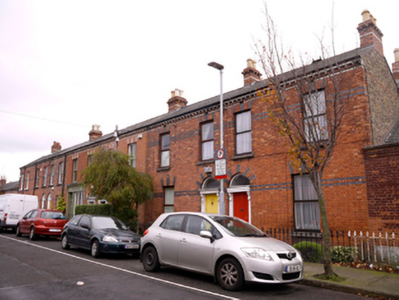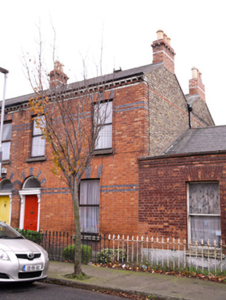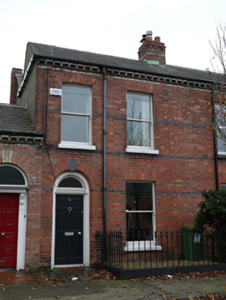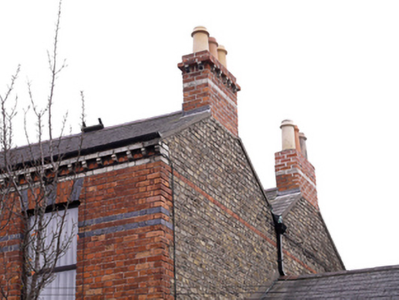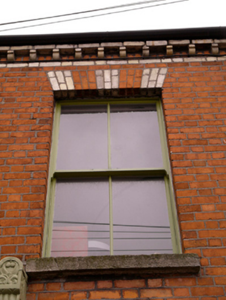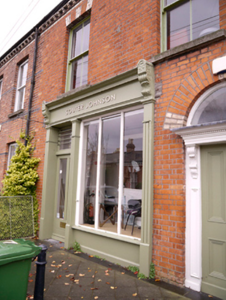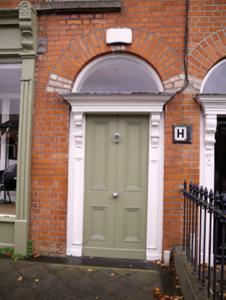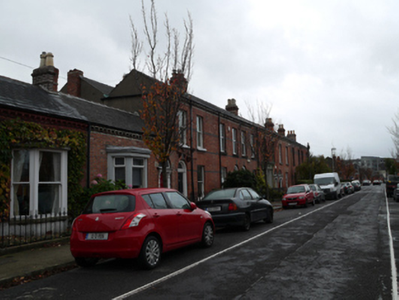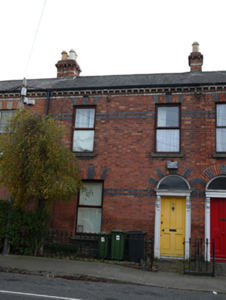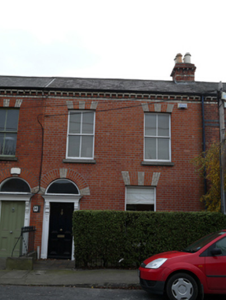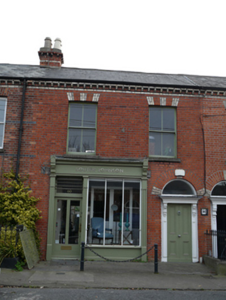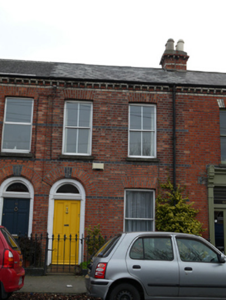Survey Data
Reg No
50080898
Original Use
House
In Use As
House
Date
1875 - 1885
Coordinates
315191, 232893
Date Recorded
04/11/2013
Date Updated
--/--/--
Description
Terrace of seven two-bay two-storey houses, built c.1880, having shopfront to front (north) elevation of no. 60. M-profile pitched slate and artificial slate roofs, having red and yellow brick chimneystacks with corbelled cornices, and corbelled yellow brick eaves courses. Red brick walls laid in Flemish bond to front (north) elevation, some houses with black brick courses. Yellow brick walls to west gable. Rendered walls to east gable. Square-headed window openings having granite sills, some with yellow brick voussoirs, some with black brick voussoirs. One-over-one timber sash windows, two-over-two timber sash windows and replacement uPVC windows. Round-headed door openings, some with black and some with yellow brick voussoirs. Bull-nosed brick door surround to no. 62 and 63. Plain fanlights over friezes supported by fluted brackets to timber door surrounds, with timber panelled doors and cut granite steps. Front gardens enclosed by granite plinth walls with cast-iron railings.
Appraisal
The terrace retains much of its early character and form, and fabric inluding timber sash windows, timber doorcases and cast-iron railings. The streets in this area were built by private developers in groups of as few as two or three houses, leading to a lively and attractive variation in decorative finishes of houses built in similar materials. The front garden boundaries remain intact, mainting the early suburban character of the street. The construction of new residential streets in this area coincided with the immigration of Jewish communities fleeing pogroms in Europe in the late nineteenth century, and the area became known as Little Jerusalem. The 1901 census indicates numerous Jewish families of Russian origin living on Lombard Street West, and the Jewish Encyclopedia of 1906 notes a 'hebrah' or minor synagogue on the street. This is one of many streets in the area referred to in James Joyce's Ulysses, as a former home of Leopold and Molly Bloom.

